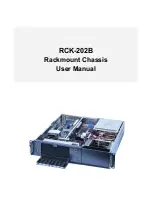
1-5
Cisco ASA Series CLI Configuration Guide
Chapter 1 Configuring Cisco Intercompany Media Engine Proxy
Information About Cisco Intercompany Media Engine Proxy
Call Fallback to the PSTN
Cisco Intercompany Media Engine provides features that manage the QoS on the Internet, such as the
ability to monitor QoS of the RTP traffic in real-time and fallback to PSTN automatically if problems
arise. Call fallback from Internet VoIP calls to the public switched telephone network (PSTN) can occur
for two reasons changes in connection quality and signal failure for the Cisco Intercompany Media
Engine.
Internet connections can vary wildly in their quality and vary over time. Therefore, even if a call is sent
over VoIP because the quality of the connection was good, the connection quality might worsen mid-call.
To ensure an overall good experience for the end user, Cisco Intercompany Media Engine attempts to
perform a mid-call fallback.
Performing a mid-call fallback requires the adaptive security appliance to monitor the RTP packets
coming from the Internet and send information into an RTP Monitoring Algorithm (RMA) API, which
will indicates to the adaptive security appliance whether fallback is required. If fallback is required, the
adaptive security appliance sends a REFER message to Cisco UCM to tell it that it needs to fallback the
call to PSTN.
The TLS signaling connections from the Cisco UCM are terminated on the adaptive security appliance
and a TCP or TLS connection is initiated to the Cisco UCM. SRTP (media) sent from external IP phones
to the internal network IP phone via the adaptive security appliance is converted to RTP. The adaptive
security appliance inserts itself into the media path by modifying the SIP signaling messages that are
sent over the SIP trunk between Cisco UCMs. TLS (signaling) and SRTP are always terminated on the
adaptive security appliance.
If signaling problems occur, the call falls back to the PSTN; however, the Cisco UCM initiates the PSTN
fall back and the adaptive security appliance does not send REFER message.
Architecture and Deployment Scenarios for Cisco Intercompany Media
Engine
This section includes the following topics:
•
•
•
Architecture
Within the enterprise, Cisco Intercompany Media Engine is deployed with the following components for
the following purposes:
•
The adaptive security appliance—Enabled with the Cisco Intercompany Media Engine Proxy,
provides perimeter security functions and inspects SIP signaling between SIP trunks.
•
Cisco Intercompany Media Engine (UC-IME) server— Located in the DMZ, provides an automated
provisioning service by learning new VoIP routes to particular phone numbers, and recording those
routes in Cisco UCM. The Cisco Intercompany Media Engine server does not perform call control.
•
Cisco Unified Communications Manager (Cisco UCM)—Responsible for call control and
processing. Cisco UCM connects to the Cisco Intercompany Media Engine server by using the
Access Protocol to publish and exchange updates. The architecture can consist of a single Cisco
UCM or a Cisco UCM cluster within the enterprise.
Summary of Contents for 5505 - ASA Firewall Edition Bundle
Page 28: ...Glossary GL 24 Cisco ASA Series CLI Configuration Guide ...
Page 61: ...P A R T 1 Getting Started with the ASA ...
Page 62: ......
Page 219: ...P A R T 2 Configuring High Availability and Scalability ...
Page 220: ......
Page 403: ...P A R T 2 Configuring Interfaces ...
Page 404: ......
Page 499: ...P A R T 2 Configuring Basic Settings ...
Page 500: ......
Page 533: ...P A R T 2 Configuring Objects and Access Lists ...
Page 534: ......
Page 601: ...P A R T 2 Configuring IP Routing ...
Page 602: ......
Page 745: ...P A R T 2 Configuring Network Address Translation ...
Page 746: ......
Page 845: ...P A R T 2 Configuring AAA Servers and the Local Database ...
Page 846: ......
Page 981: ...P A R T 2 Configuring Access Control ...
Page 982: ......
Page 1061: ...P A R T 2 Configuring Service Policies Using the Modular Policy Framework ...
Page 1062: ......
Page 1093: ...P A R T 2 Configuring Application Inspection ...
Page 1094: ......
Page 1191: ...P A R T 2 Configuring Unified Communications ...
Page 1192: ......
Page 1333: ...P A R T 2 Configuring Connection Settings and QoS ...
Page 1334: ......
Page 1379: ...P A R T 2 Configuring Advanced Network Protection ...
Page 1380: ......
Page 1475: ...P A R T 2 Configuring Modules ...
Page 1476: ......
Page 1549: ...P A R T 2 Configuring VPN ...
Page 1550: ......
Page 1965: ...P A R T 2 Configuring Logging SNMP and Smart Call Home ...
Page 1966: ......
Page 2059: ...P A R T 2 System Administration ...
Page 2060: ......
Page 2098: ...1 8 Cisco ASA Series CLI Configuration Guide Chapter 1 Troubleshooting Viewing the Coredump ...
Page 2099: ...P A R T 2 Reference ...
Page 2100: ......






































